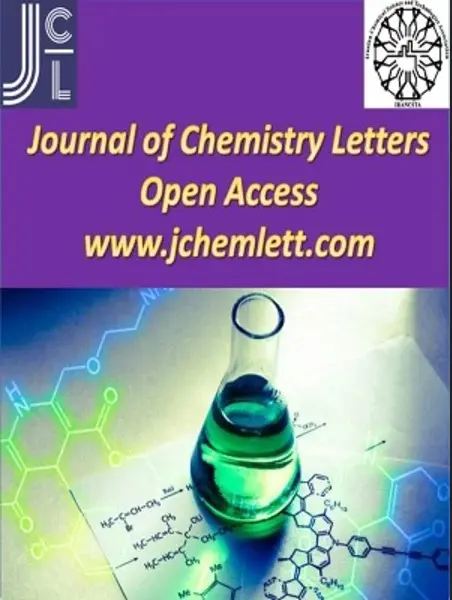-
in-silico modeling of inhibitory activity and toxicity of some indole derivatives towards designing highly potent dengue virus serotype 2 ns4b inhibitors
جزئیات بیشتر مقاله- تاریخ ارائه: 1401/02/12
- تاریخ انتشار در تی پی بین: 1401/10/28
- تعداد بازدید: 140
- تعداد پرسش و پاسخ ها: 0
- شماره تماس ژورنال: 989360221112
in-silico modeling of inhibitory activity and toxicity of some indole derivatives towards designing highly potent dengue virus serotype 2 ns4b inhibitors
the global prevalence of dengue virus (denv) infection has become a source of great concern to humanity. as such, infection, if left untreated, could progress to a life-threatening stage called dengue hemorrhagic fever or dengue shock syndrome. a large percentage of the world's population could be at risk of being infected by the dengue virus. the denv ns4b receptor is essential in viral replication and hence could in principle be suitable as a therapeutic target in the treatment of dengue viral infection.
the augmentation of existing agents that could inhibit the dengue virus is important. in this research, various classes of molecular descriptors were generated. quantitative structure-activity relationship studies (qsars) have been conducted to correlate the molecular properties of some indole derivatives with their anti-dengue activity and toxicity. the inhibitory activity and toxicity prediction models were statistically valid and robust, with acceptable statistical validation factors such as predicted r2 pred., adjusted r2 adj., cross-validated q2 and r2 regression coefficient, etc.
(r2 pred. = 0.64448, r2 adj. = 0.59223, cr 2 𝑝= 0.57134, q2 cv = 0.64448, r2 = 0.63201) and (r2 pred. = 0.81813, r2 adj. = 0.56015, cr 2 𝑝= 0.5386, q2cv = 0.50548, r2 = 0.60645), respectively. the models revealed that the average broto-moreau autocorrelation-lag 7/weighted by first ionization potential (aats7i), number of hydrogen bond acceptors (nhbacc) for activity and 3d topological distance-based autocorrelation-lag 9/weighted by van der waals volumes (tdb9v) descriptors were found to strongly influence the anti-dengue biological activity (pec50) and toxicity (pcc50) of the indole derivatives, respectively. the indole derivatives were predicted to be orally bioavailable with excellent gastrointestinal absorption (94.044–90.219%). the denv-2 ns4b inhibitory activity, as well as the cytotoxicity of indole derivatives with no experimental data, could be predicted with high precision using the models developed, which could further lead to a cut in experimental cost as well as the design of highly potent and less toxic derivatives.
حوزه های تحت پوشش ژورنال
مقالات جدیدترین رویدادها
-
استفاده از تحلیل اهمیت-عملکرد در ارائه الگوی مدیریت خلاقیت سازمانی و ارائه راهکار جهت بهبود
-
بررسی تاثیر ارزش وجوه نقد مازاد بر ساختار سرمایه شرکت های پذیرفته شده در بورس اوراق بهادار تهران
-
بررسی تأثیر سطح افشای ریسک بر قرارداد بدهی شرکت های پذیرفته شده در بورس اوراق بهادار تهران
-
بررسی تأثیر رتبه بندی اعتباری مبتنی بر مدل امتیاز بازار نوظهور بر نقد شوندگی سهام با تأکید بر خصوصی سازی شرکت ها
-
تأثیر آمیخته بازاریابی پوشاک ایرانی بر تصویر ذهنی مشتری پوشاک ایرانی (هاکوپیان)
-
مشخصات جریان ترافیک و ماهیت شناخت آن
-
بررسی پراکندگی و تراکم و قدمت اشکفت ها و معدن ها و مقبره های دستکند به ثبت رسیده در سازمان میراث فرهنگی ایران با استفاده از سامانه اطلاعات جغرافیایی
-
ارائه ی راهکارهای لازم برای مدیریت استراتژیک جوامع چند قومیتی بر اساس سیستم های چندمتغیره و دکوپله سازی آن ها
-
تاثیر بتن خود متراکم حاوی نانو سیلیس و متاکائولن در مقاومت فشاری محیط معمولی
-
کاربرد خوشه بندی فازی در تحلیل پروتئین های مرتبط با سرطان های مری، معده و کلون بر اساس تشابهات تفسیر هستی شناسی ژنی
مقالات جدیدترین ژورنال ها
-
مدیریت و بررسی افسردگی دانش آموزان دختر مقطع متوسطه دوم در دروان کرونا در شهرستان دزفول
-
مدیریت و بررسی خرد سیاسی در اندیشه ی فردوسی در ادب ایران
-
واکاوی و مدیریت توصیفی قلمدان(جاکلیدی)ضریح در موزه آستان قدس رضوی
-
بررسی تاثیر خلاقیت، دانش و انگیزه کارکنان بر پیشنهادات نوآورانه کارکنان ( مورد مطالعه: هتل های 3 و 4 ستاره استان کرمان)
-
بررسی تاثیر کیفیت سیستم های اطلاعاتی بر تصمیم گیری موفق در شرکتهای تولیدی استان اصفهان (مورد مطالعه: مدیران شرکتهای تولیدی استان اصفهان)
-
بررسی تاثیر آمیخته های بازاریابی سبز بر وفاداری مشتری در شرکتهای کوچک و متوسط محصولات غذایی سبز
-
امکان مطالبه و جبران غرامت و آسیب های جانی مالی نفتکش سانچی بر مبنای حقوق بین الملل
-
بررسی نقش فاکتورهای انگیزشی بر توانمندی کارکنان
-
معیارهای دموکراتیک در دنیای مدرن و اسلام در انتخابات منصفانه
-
comprehensive review on gas migration and preventative strategies through well cementing


سوال خود را در مورد این مقاله مطرح نمایید :